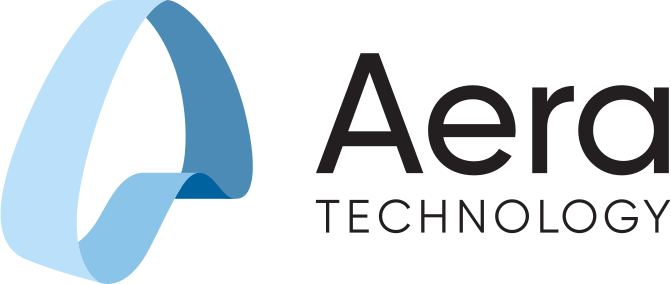Improving Demand Forecasting with AI: The Journey to Decision Automation

If we believe that every customer is different and every product is unique, why do we continue to forecast demand at an aggregate level? Why do we lump products and product categories together, group regions, create customer segments, and use similar tactics?
The answer is obvious: traditionally, there is too much complexity to forecast at the grain level – not to mention that the volume of information required to do so would make it impossible for users to digest the results.
Modern customer segmentation was born in 1956 with the publication of Wendell Smith’s “Product Differentiation and Market Segmentation as Alternative Marketing Strategies.” Smith recognized that customers needed different types of products in a market that didn’t offer the vast variety of options available to us today.
Customer segmentation and product categorization have become mainstays of business, and have not changed much conceptually since 1956 even as we first relied on computers, then the internet, and today a myriad of applications that can produce relatively accurate forecasts at different levels.
Today, the bottleneck is no longer technology, but our own capacity as humans to review, understand, update, and execute upon demand forecasts built at the Customer/SKU/Location level, or finer grains.
Automation is the solution to this bottleneck, and today’s AI-powered Decision Intelligence platforms make the transformation possible.
Finer and more robust forecasting is possible
For many businesses, this journey will require a few additional steps – especially for those businesses still relying on spreadsheets as their core Demand Planning tool, a number estimated as high as 70% by a 2022 McKinsey & Co. survey.
The first step is to use technology to create finer and more robust forecasts, then to begin automating the updates while teams continue to execute them before, ultimately, building sufficient confidence to let AI automate the process – from forecasting and planning to executing required actions.
Many businesses have already progressed along this path by adopting the many applications on the market to create more accurate forecasts, drill down into more detailed levels, incorporate both internal and external datasets, and track forecast accuracy (among other functions). Yet although these tools are a step in the right direction, they ultimately serve to provide a better version of methods that were already in place. They aren’t designed to execute actions at the finest level of detail – such as proactively sending one unit of an item to a location where we expect an order to be placed within the next five days.
“Digital natives” in the ecommerce space have made the most progress towards this goal thanks to their ability to capture detailed data at the individual customer level; track customer activity over time; engage customers directly; and manage pricing and promotions dynamically.
The most advanced ecommerce teams can, for certain SKUs, forecast which product, how much of it, and when the next purchase will occur. Consider, for example, a customer buying diapers – a product that, for a given timeframe, has a relatively predictable buying pattern. Or, more generally, consider the shopping habits of those who regularly buy groceries online.
Today’s solutions have made these more granular forecasts possible, but primarily for those whose businesses support it. The next transformative wave of technology will open those benefits up to an even wider range of businesses – including many that, until recently, have relied upon spreadsheets or other legacy tools.
The new approach: Auto-forecasting
In addition to striving for finer forecasting grain, businesses are looking for tools that can help them update forecasts in real time given changes in demand, while also providing visibility into the “why” behind those changes – such as by listing the influencing factors, showing the changing contextual information, displaying the datasets analyzed, the algorithms used, and so forth.
The premise is simple. Users cannot feasibly update forecasts in real time as data inputs change, especially when forecasting at more detailed levels. As a result, they look to technology to continuously update the predictions.
If we were to plot the forecast over time, this new approach would produce a smooth curve, as opposed to a step function where a team of planners sets a forecast and updates it only before the next S&OP meeting. More importantly, the curve would be smooth at the grain level, producing a more accurate representation of aggregate demand.
Decision Intelligence makes this possible by harmonizing data from internal and external sources, then analyzing it continuously with advanced AI and ML models to produce the best possible recommendation at any given moment.
With Aera Decision Cloud™ and AI skills, your teams can review recommendations and update forecasts by accepting the proposal. Over time, as the team builds confidence in these results (and gains visibility into the factors triggering forecast changes), they’ll gain an additional advantage from automating the process – thereby avoiding review bottlenecks, as the system updates forecasts in real time, effectively creating an autonomous forecast that factors in changing consumer demand and market conditions.
The next step: Automating execution
Once auto-forecasting is operational, it’s possible that your team may find that execution is not keeping up with the freshness of the forecasting updates. This leads to the next opportunity for efficiency gains: automating execution.
The key to doing so is to focus on the types of decisions made by your planners as they work with the forecast – particularly, the actions that are taken when the forecast updates.
The logic behind those decisions can also be digitized using AI, such that decisions can be configured to be evaluated every time a forecasting change occurs. Doing so can provide your business an opportunity to rethink the process and begin orchestrating across functions.
For example, if a dramatic spike in demand triggers a planner to work with Procurement to create purchase orders, this is the perfect time to standardize how that process runs – from initial communication and collaboration between teams, to the system inputs and outputs needed to execute the decision.
Again, Aera Decision Cloud analyzes real-time data, updates the forecast accordingly, and can execute actions autonomously by writing back to systems of record, at the moment of maximum impact. Instead of a multi-step process, users see a new PO, a shipment transfer, a safety stock increase, and other such changes, along with the record of the new prediction of demand at the grain level.
As with auto-forecasting, this journey may begin with your planners evaluating every action that the platform proposes, then transitioning toward autonomous execution as confidence in the system grows. We find that, as teams verify high forecasting accuracy and the beneficial outcomes of actions taken, they want to move quickly toward decision automation to capitalize on opportunities and avoid unnecessary delays.
Before you begin the journey…
To make this transformation possible, you’ll need to account for important factors that ensure success: Communication, collaboration, and governance.
Communication and collaboration go hand-in-glove, as they allow your business the opportunity to standardize processes while you move toward automating both forecasting and execution. As you can imagine, making this shift from people-led to AI-delivered forecasting requires proper planning. Once the platform is online, we recommend that communication loop back to users as much as possible, while collaboration between teams offers opportunities for visibility into the forecast and execution, as well as the analytics supporting them.
Governance is the framework within which the AI platform operates. There will always be exception scenarios, and we recommend that businesses determine the necessary guardrails to both avoid erroneous updates and for actions to be reviewed and approved if they fall outside normal boundaries.
Companies rely on Aera Decision Cloud’s Business Rules to set thresholds for planners to review changes – for example, triggering review when a demand forecast increases or decreases by more than a defined percentage. Similar rules can govern automated activities – for example, triggering a manual review when the AI would trigger a PO beyond a specific amount.
With Aera Decision Cloud, you can deploy AI for demand forecasting and decision automation easily and with peace of mind – giving your company the benefits of a level of insight, forecasting, and agility that previously only “digital natives” could enjoy.
Learn how your company can measure the value of Decision Intelligence and develop a roadmap for the journey – watch our “Future Now” webinar on the Aera Test Drive program.






